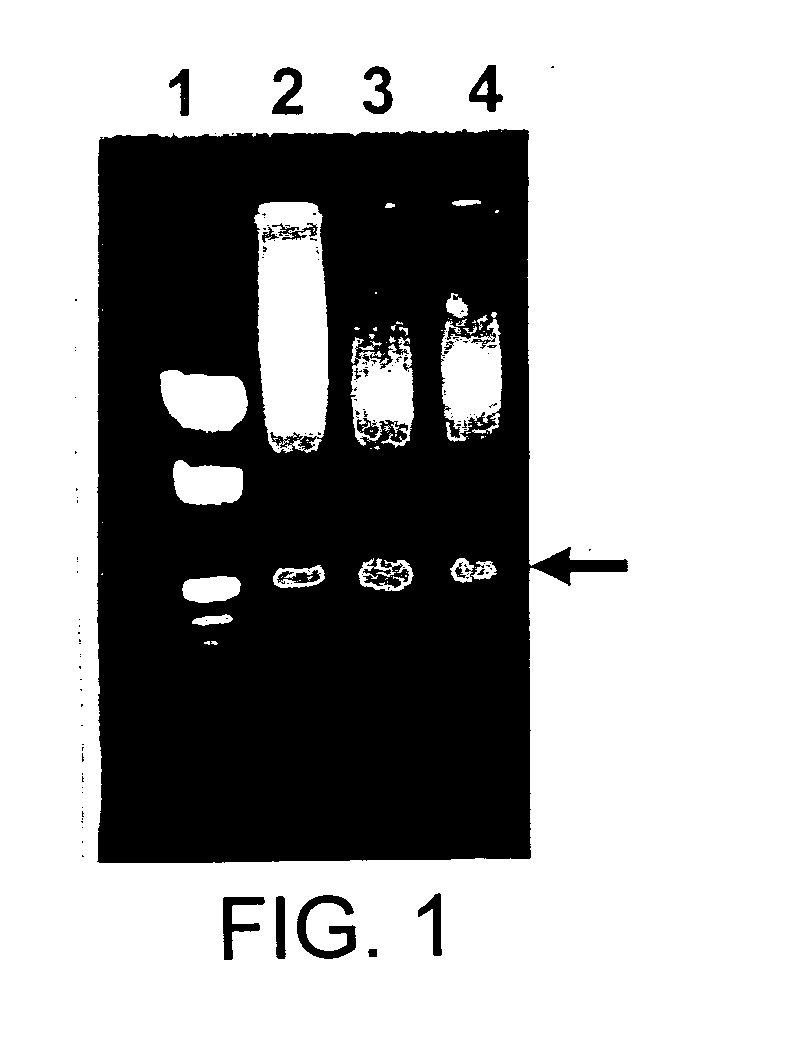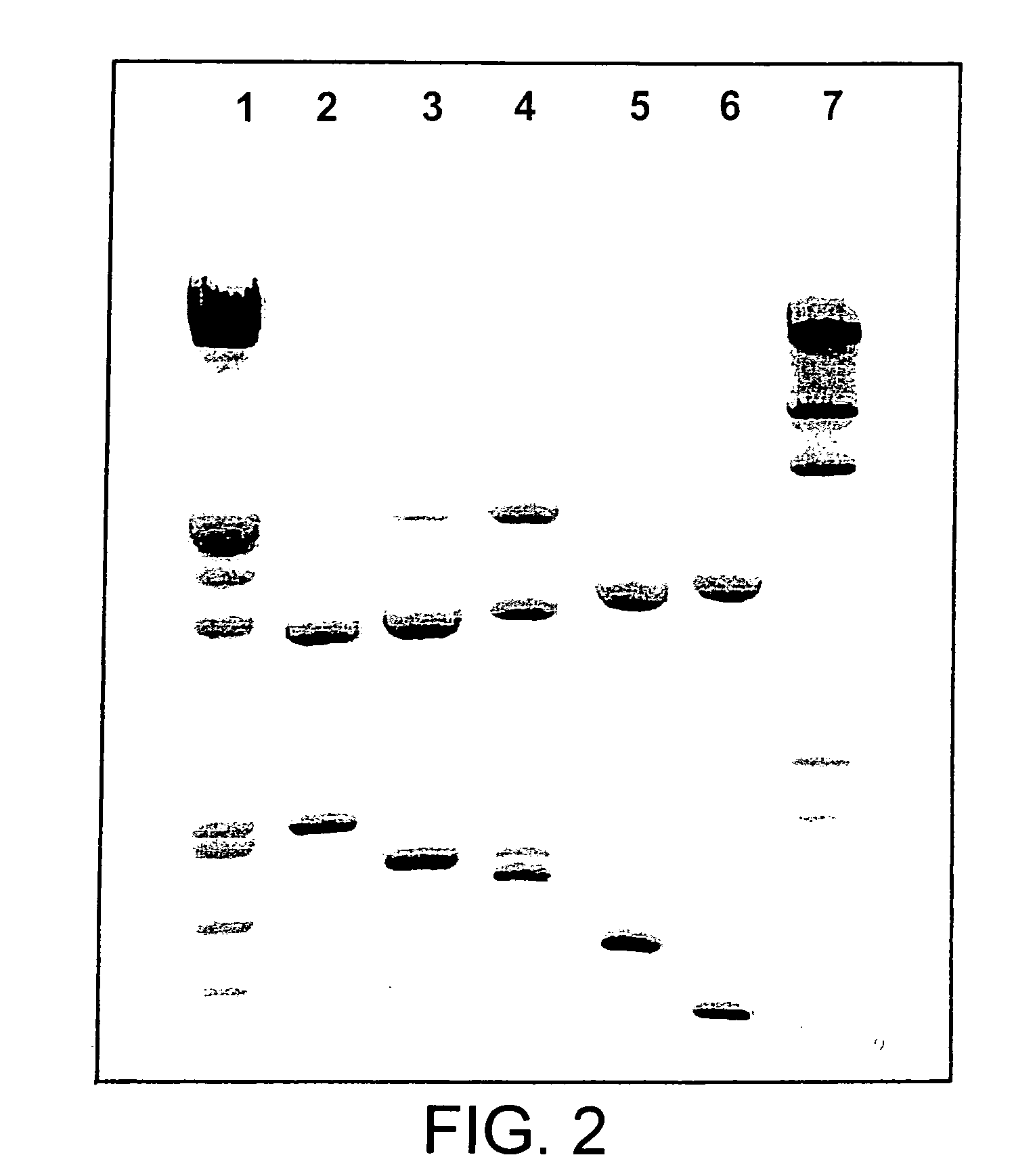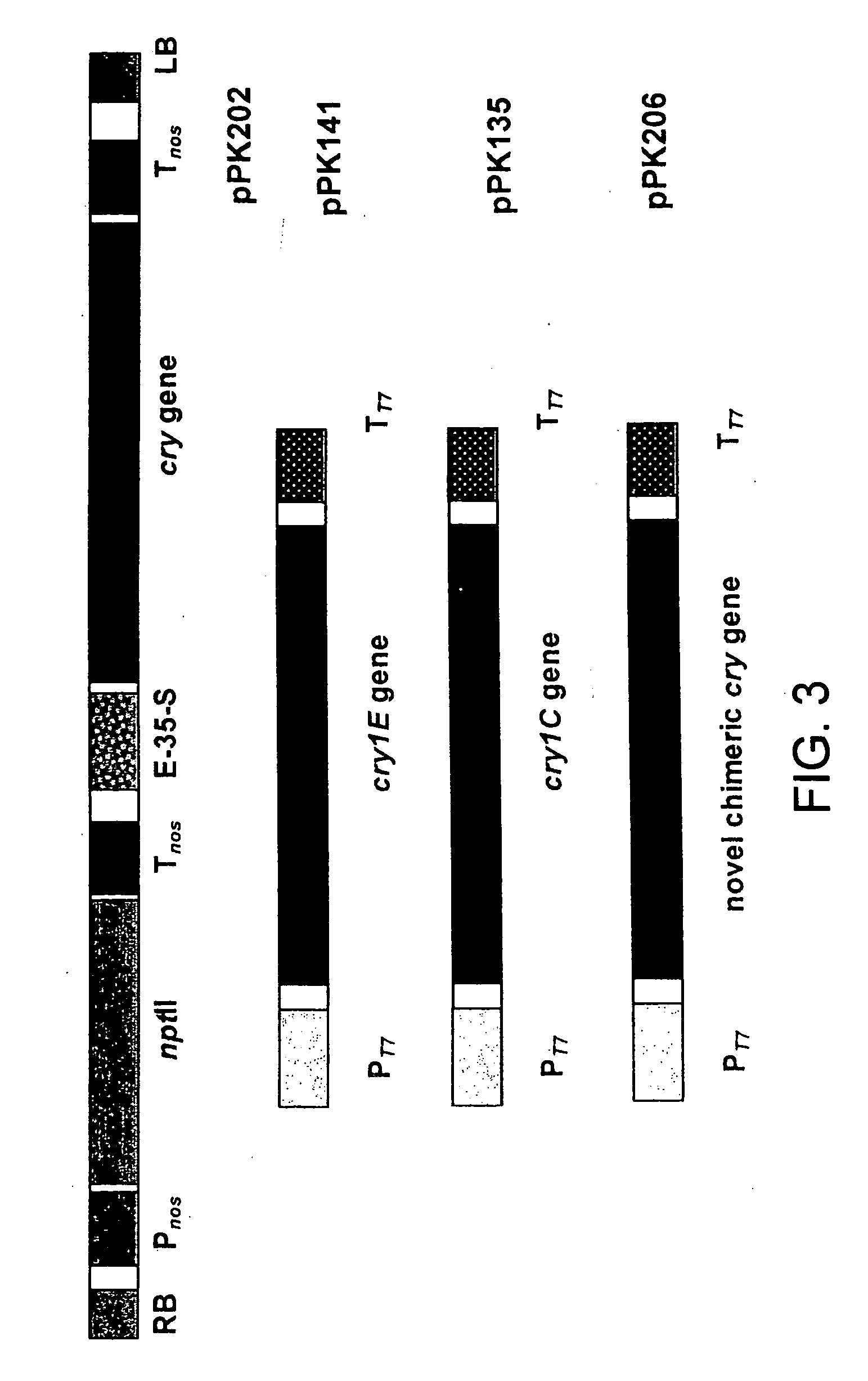Chimeric CrylE delta endotoxin and methods of controlling insects
a technology of endotoxin and insect, applied in the field of chimeric cryle delta endotoxin and insect control methods, can solve the problems of crop loss, crop yield decline, crop loss, etc., and achieve the effect of high insecticidal property
- Summary
- Abstract
- Description
- Claims
- Application Information
AI Technical Summary
Benefits of technology
Problems solved by technology
Method used
Image
Examples
example 1
Comparative Toxicity of the Novel Chimeric Cry1E Expressed in E. coli to Larvae of Lepidopteran Insect Pests
[0138] A chimeric δ-endotoxin, 616 amino acid residues long, herein said chimeric Cry1E was strategically designed by replacing a polypeptide domain (from position 530 to 587) of Cry1Ea protein by that of Cry1Ca (from position 533 to 602). A polypeptide of 25 amino acid residues was additionally included at the C-terminus extreme as described earlier. A 1.99 kb nucleotide sequence was theoretically designed to code for the above-mentioned chimeric δ-endotoxin. The codons for each amino acid were distributed evenly to avoid temporary deficiency of the tRNA during translation. Several δ-base cutter restriction enzyme sites were created in the designed gene. BamHI, HindIII and NcoI restriction sites were created at 5′-end and EcoRI at the 3′-end of the designed gene. The gene was divided into 58 overlapping oligonucleotides (40 to 65 nucleotides long). Each oligonucleotide had ...
example 2
High Larval Toxicity of the Transgenic Plants Expressing Novel Chimeric Cry1E Protein
[0143] In order to establish efficacy of the novel chimeric toxin in plants, a plant transformation vector was constructed for the development of transgenic plants. A plasmid pPK58 (having CaMV35S promoter with duplicated enhancer) was digested with BamHI and HindIII and pPK200 with HindIII and EcoRI to excise out CaMV35S promoter with the duplicated enhancer and chimeric cry1E gene, respectively. A triple ligation was carried for the cloning of the two fragments in pLITMUS38 cloning vector (New England Biolabs). The plasmid was named pPK59, which had CaMV35S promoter with the duplicated enhancer at the upstream of the chimeric gene. The nos transcription terminator was cloned at the downstream of the chimeric gene nos polyadenylation element was amplified using pBI101.1 as template with suitable primers, which created MfeI and EcoRI restriction sites at the upstream and downstream, respectively. ...
example 3
High Toxicity of the Chimeric Cry1E Protein to Larvae of Spodoptera sp. in all the Stages of Their Development
[0144] A bioassay was conducted on 1st (3 days old), 3rd (7 days old) and 5th (12 days old) instar larvae to established the efficacy of the engineered protein expressed in the transgenic plants. Bioassay with 1st instar larvae has been discussed in example 2. Complete leaves of transgenic and control plants were used for feeding the advanced stage larvae. The leaf petiole was held in cotton plug over a 250 ml flask containing ½ MS salt solution to overcome wilting of the leaf. 5 insect larvae were allowed to feed on each leaf. The leaves of control plant fed by 3rd (FIG. 5) and 5th (FIG. 6) instar larvae were changed after 16 h and 8 h, respectively, as they were consumed completely by the insect larvae. The result established that feeding on transgenic leaf causes mortality of larvae in all the developmental stages within 48 h. Ingestion of approximately 1 cm2 of transge...
PUM
| Property | Measurement | Unit |
|---|---|---|
| Temperature | aaaaa | aaaaa |
| Temperature | aaaaa | aaaaa |
| Temperature | aaaaa | aaaaa |
Abstract
Description
Claims
Application Information
 Login to View More
Login to View More - R&D
- Intellectual Property
- Life Sciences
- Materials
- Tech Scout
- Unparalleled Data Quality
- Higher Quality Content
- 60% Fewer Hallucinations
Browse by: Latest US Patents, China's latest patents, Technical Efficacy Thesaurus, Application Domain, Technology Topic, Popular Technical Reports.
© 2025 PatSnap. All rights reserved.Legal|Privacy policy|Modern Slavery Act Transparency Statement|Sitemap|About US| Contact US: help@patsnap.com



